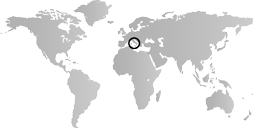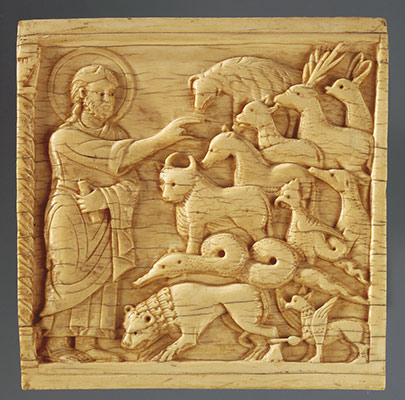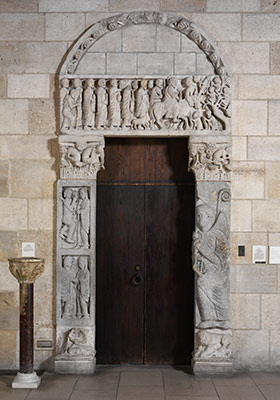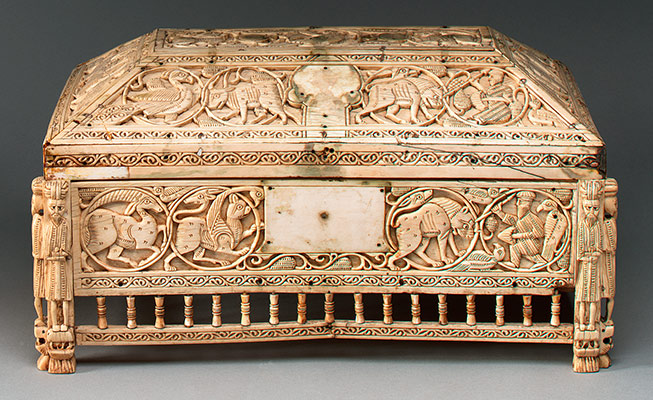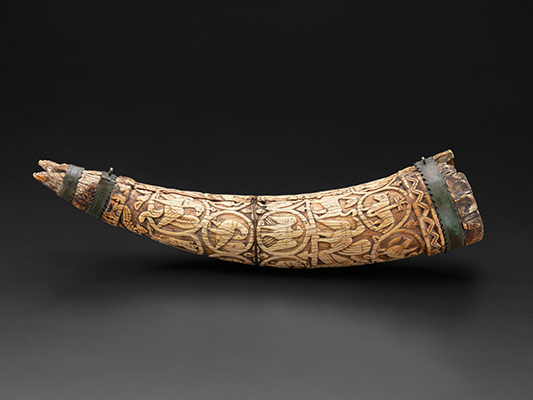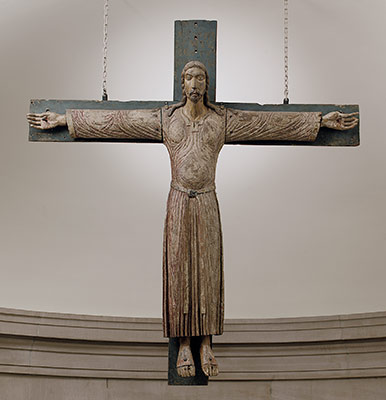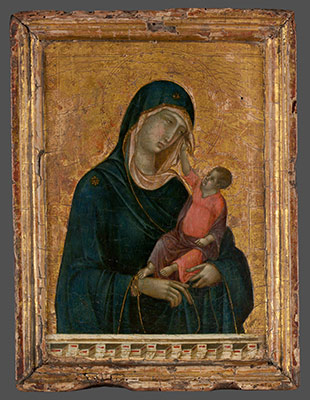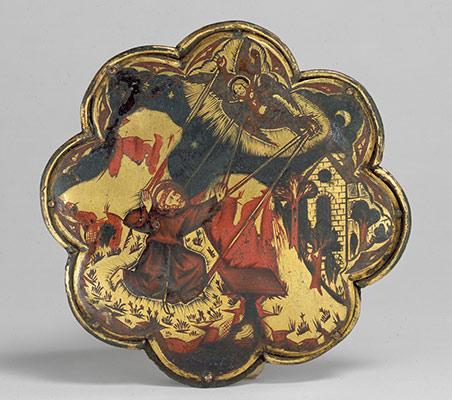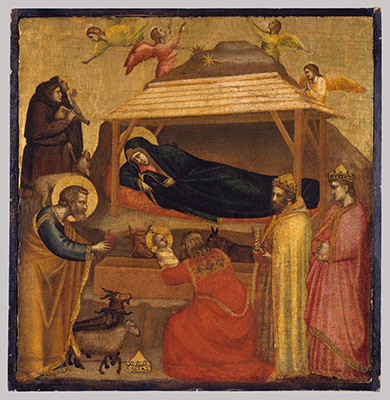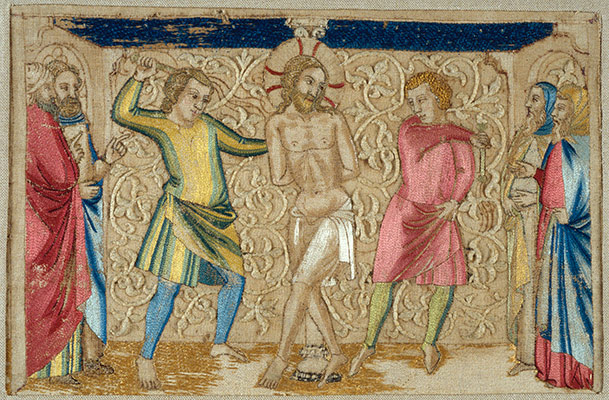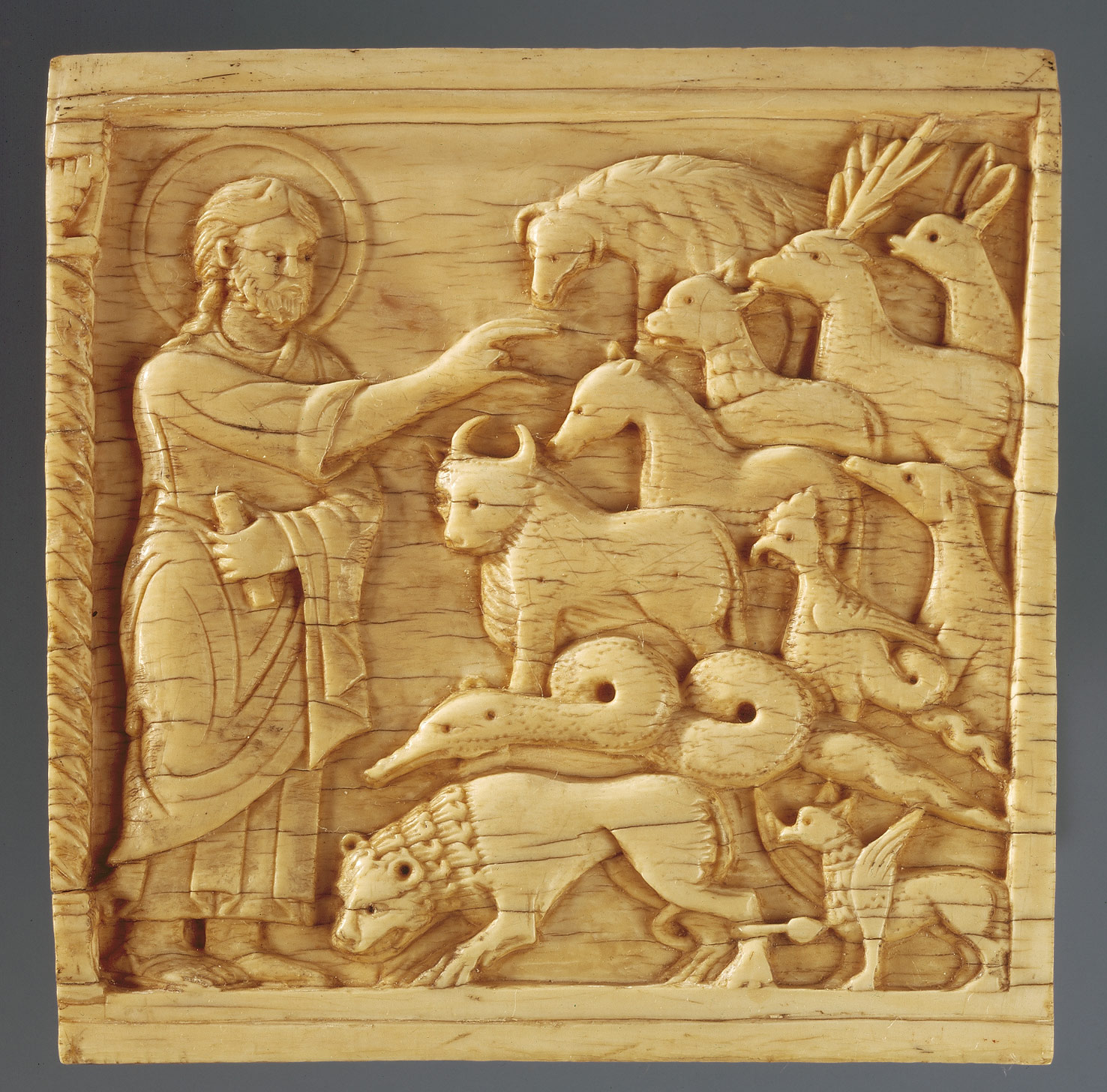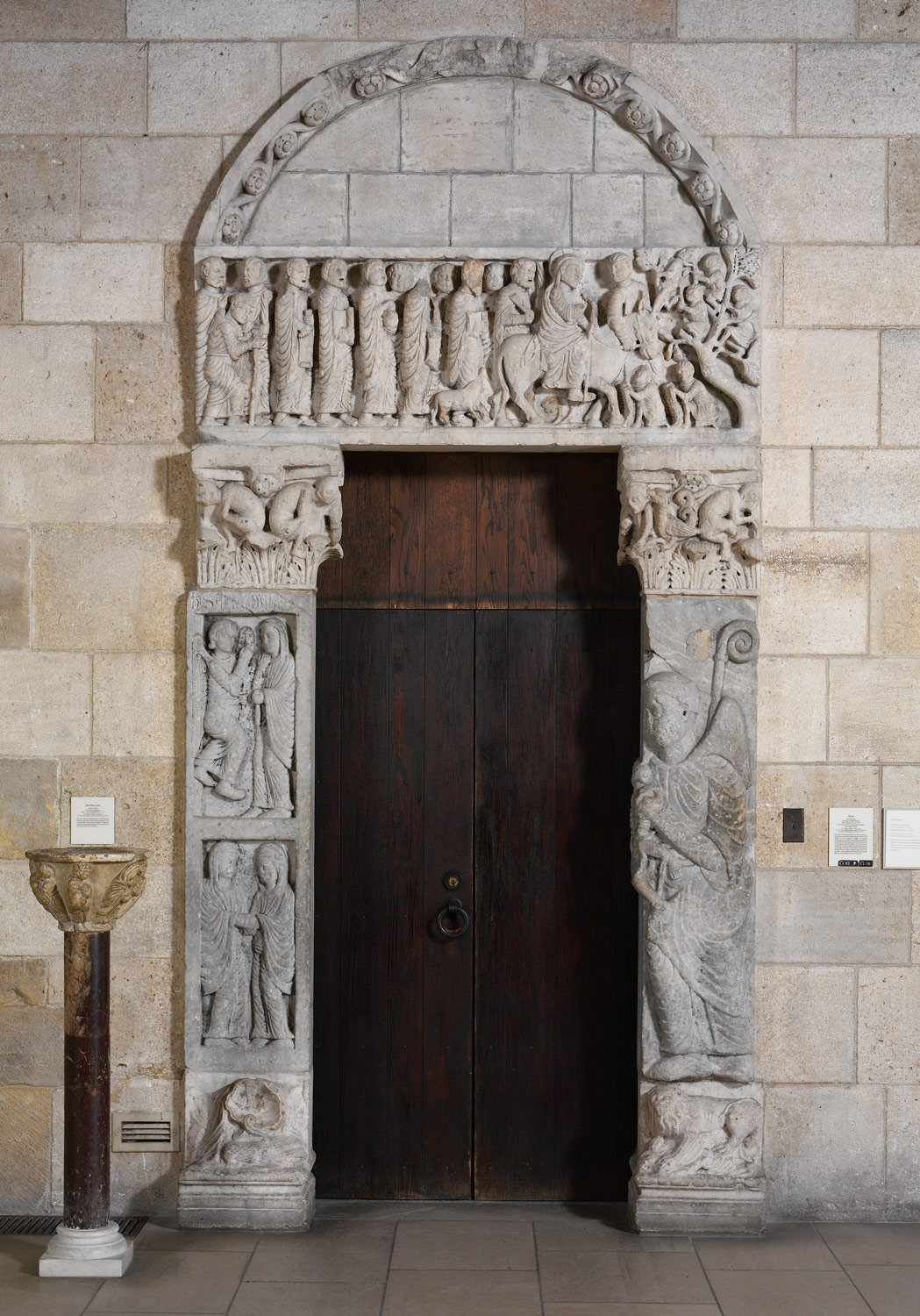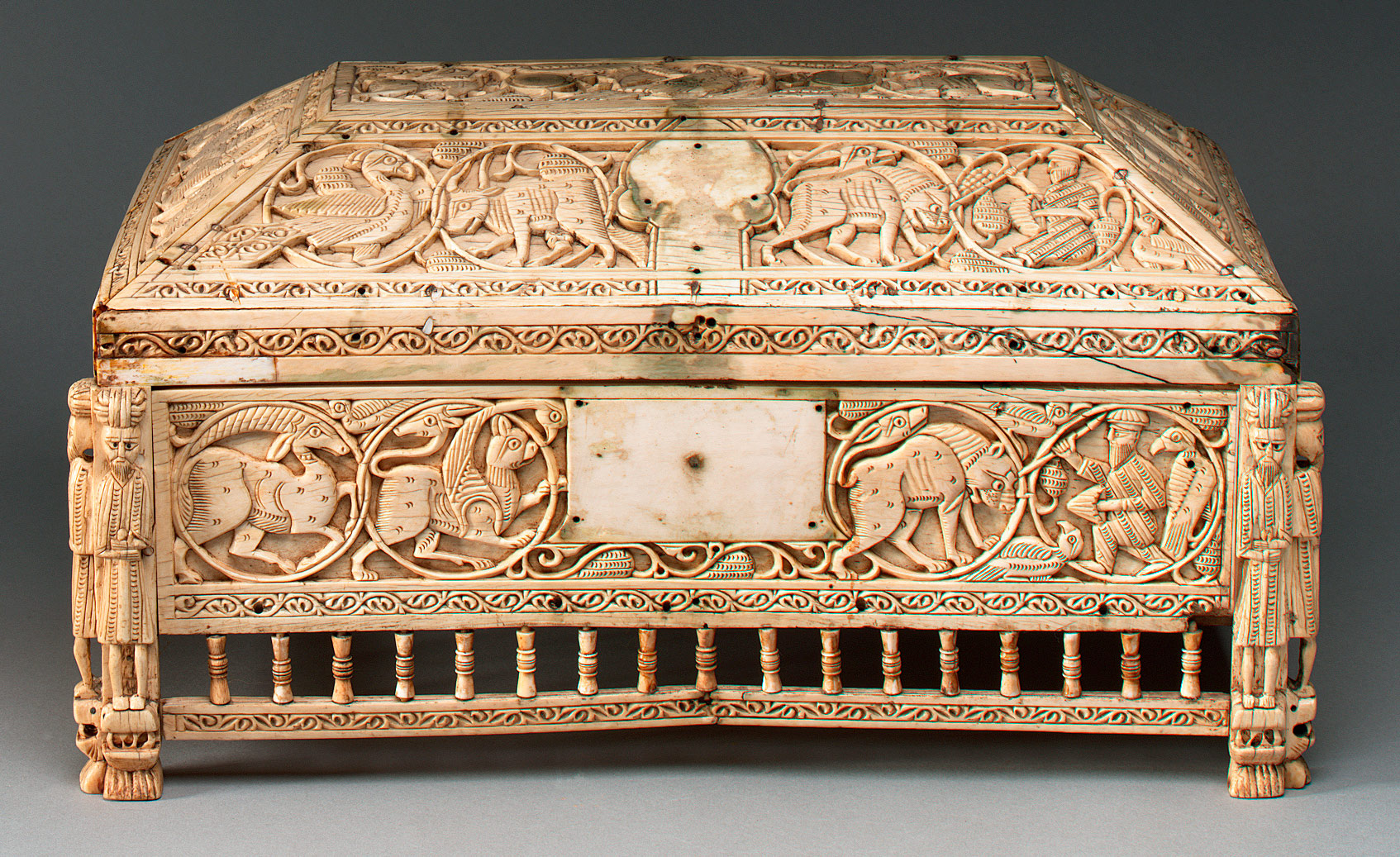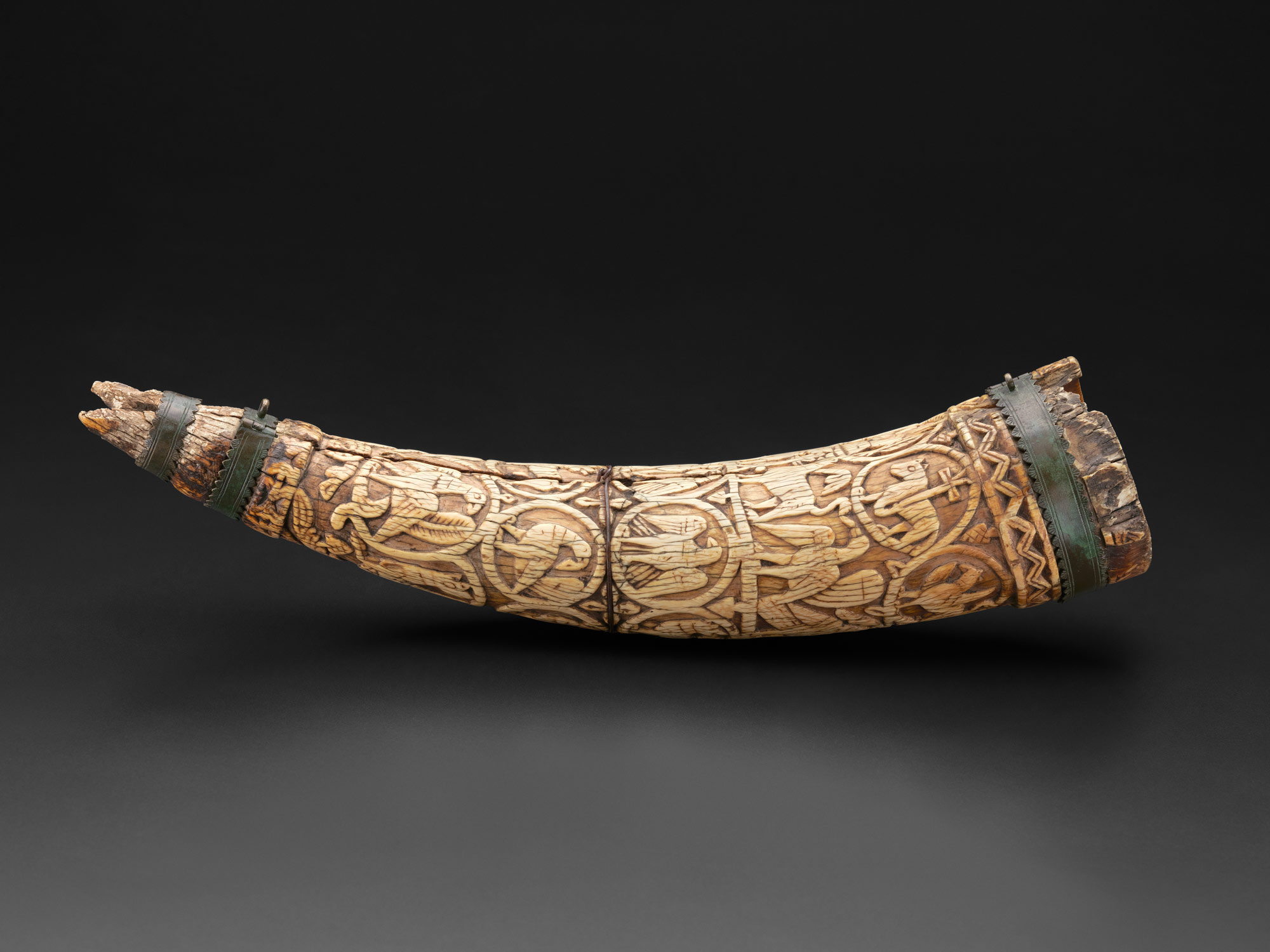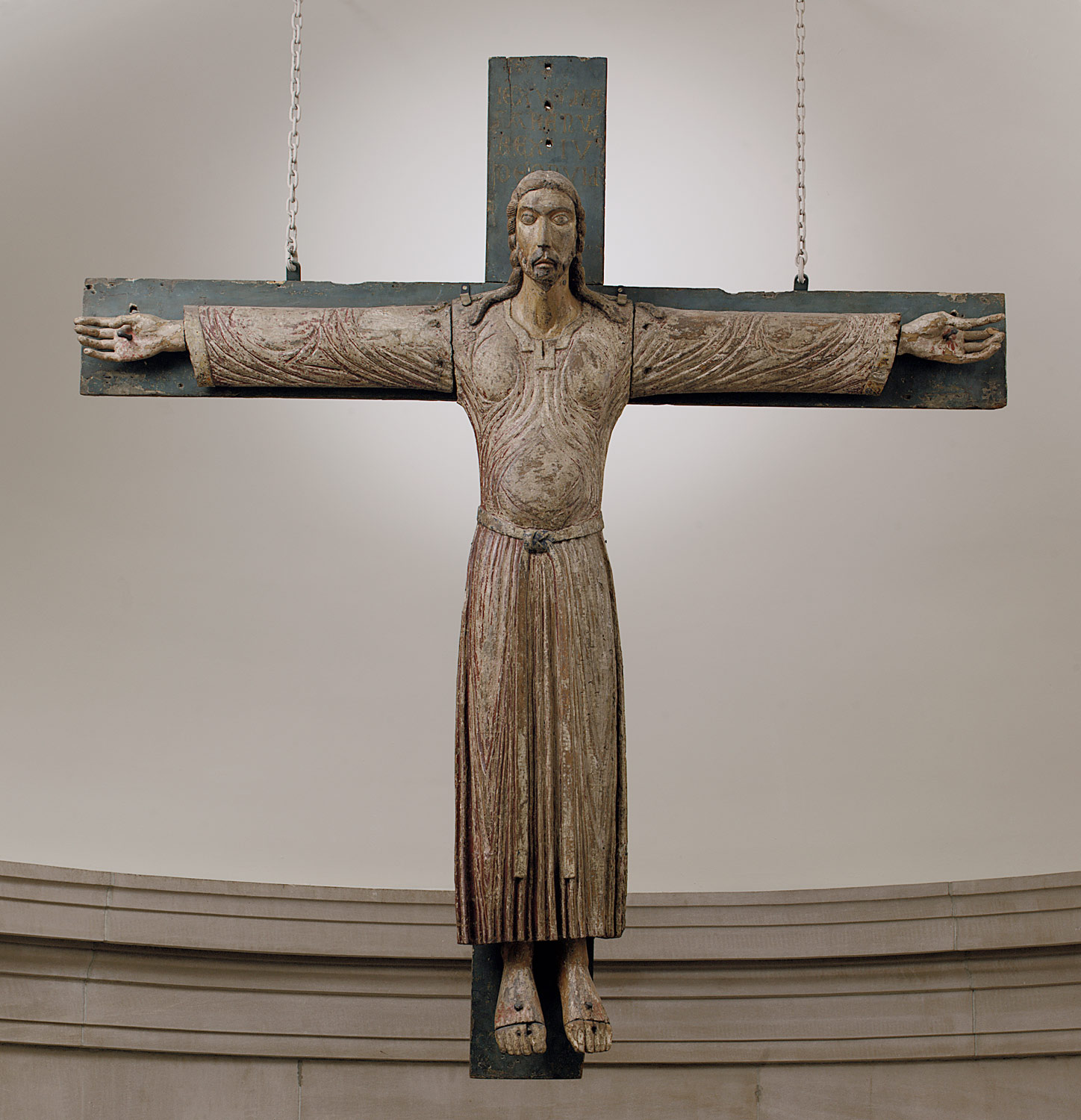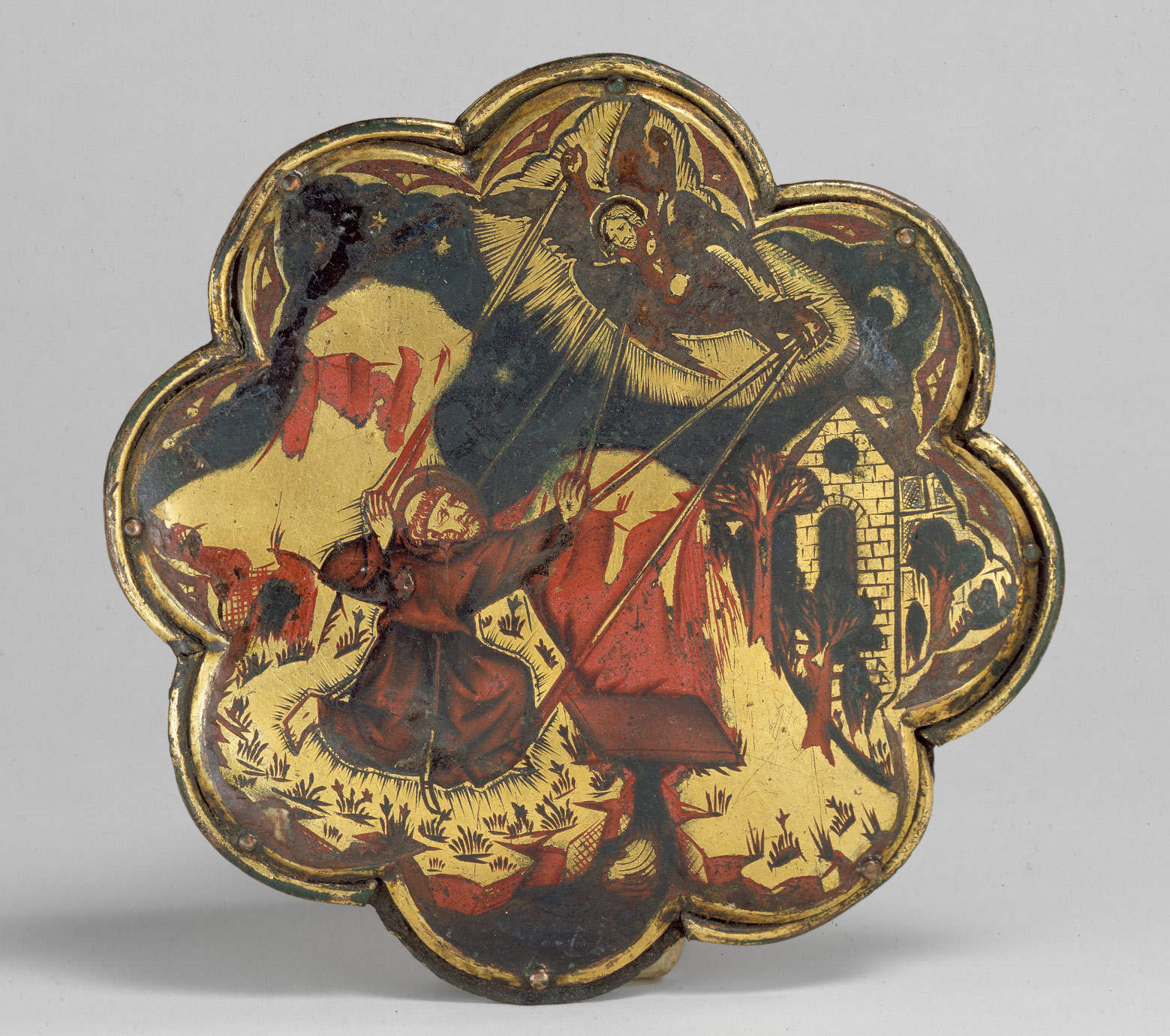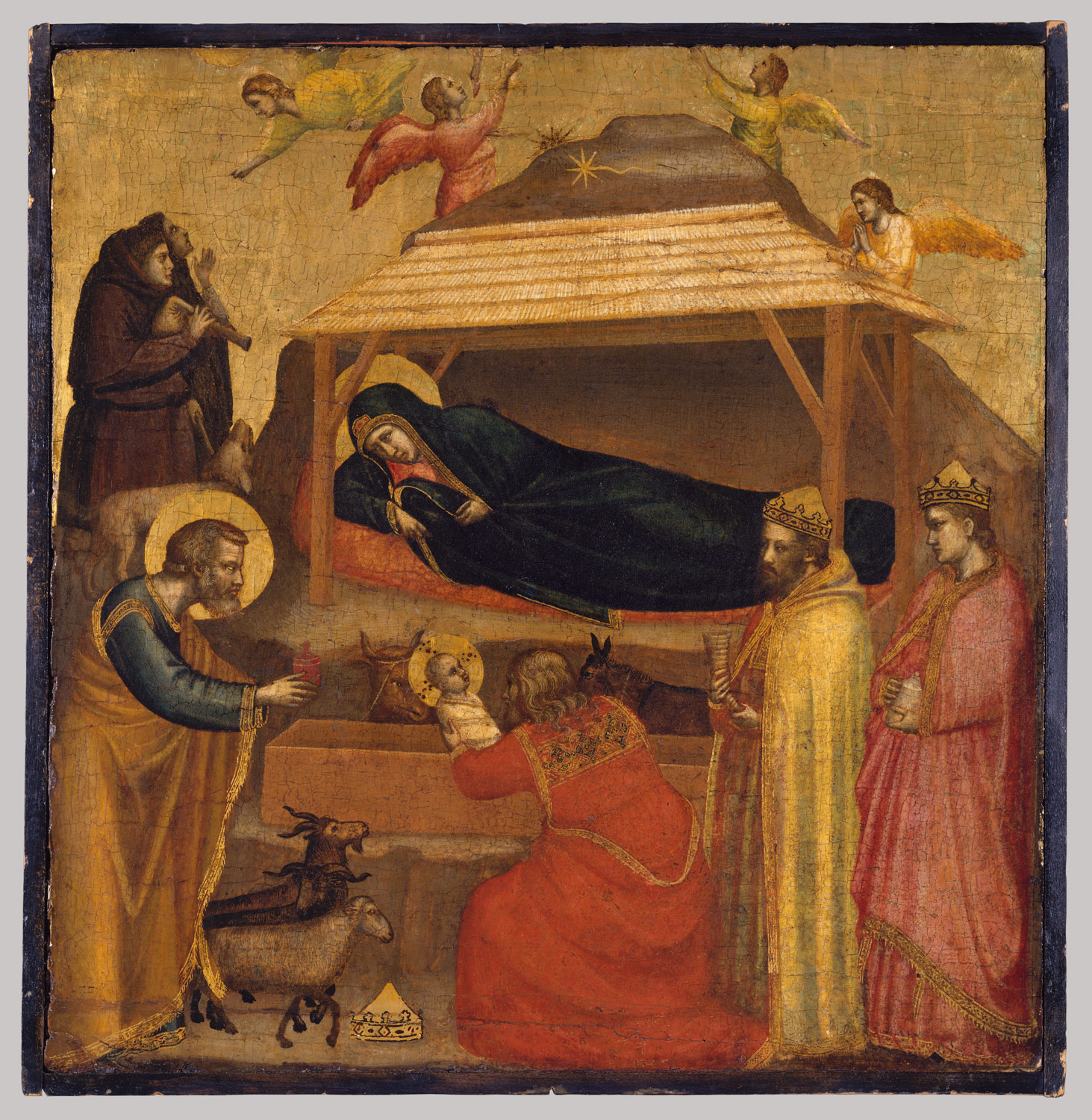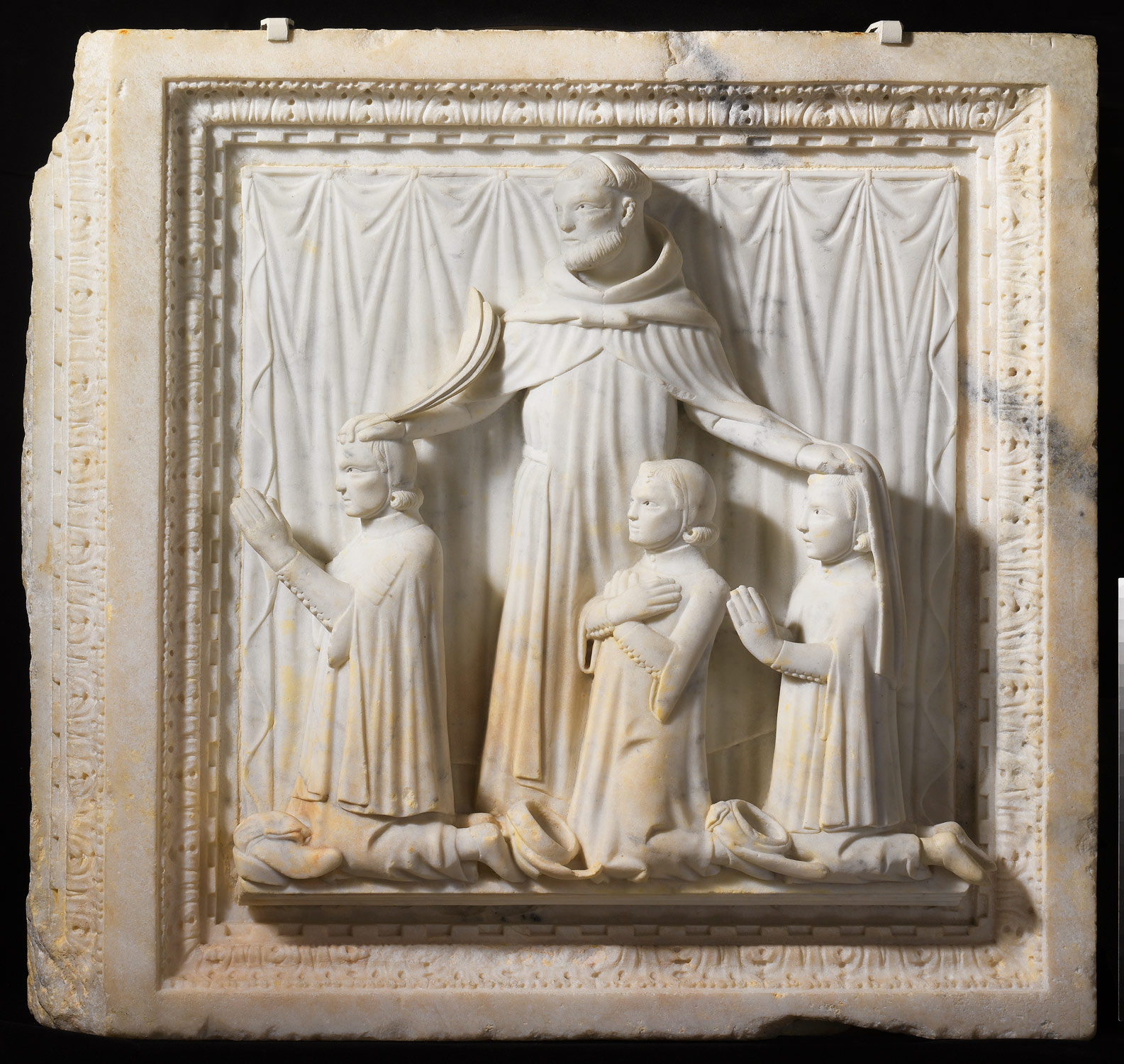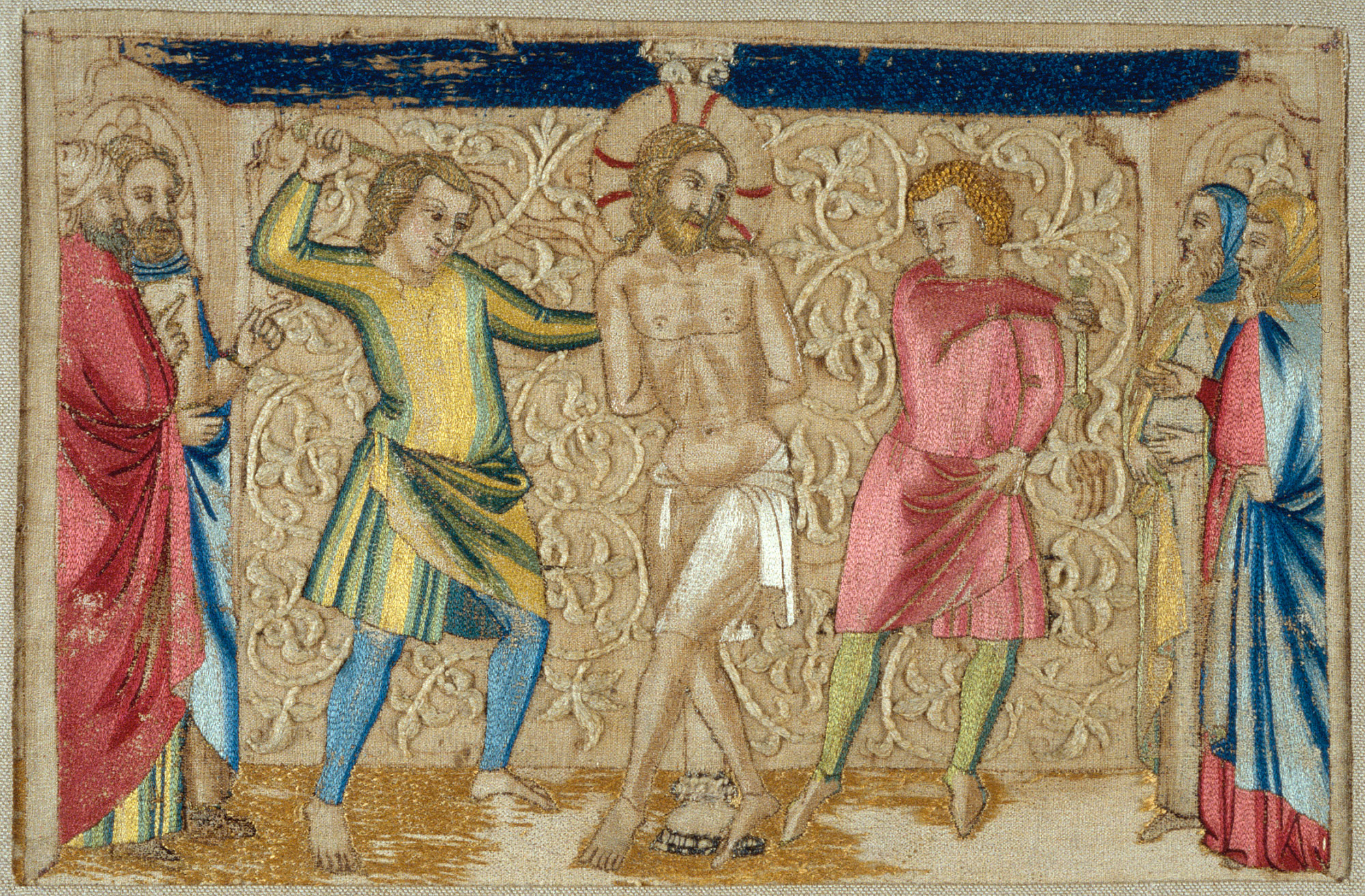The Italian peninsula is marked by political fragmentation during these centuries. While the north witnesses rapid urban growth leading to the formation of city-states, Sicily and the south are ruled by successive monarchies. From the eleventh to the fourteenth century, territorial and power struggles between the Holy Roman Empire, the papacy, and the city-states of the northern and central peninsula preclude domination by a central authority. During a period of unparalleled economic and demographic growth, which peaks around 1300, the arts of painting, sculpture, and architecture flourish under the patronage of civic and religious institutions and private individuals. At the end of the period, the peninsula experiences a great cultural and intellectual revival, spawned by the study of classical antiquity and the development of vernacular Italian literature.
Italian Peninsula, 1000–1400 A.D.
Timeline
1000 A.D.
1100 A.D.
NORTH AND CENTRAL ITALY
SOUTH ITALY
SICILY
1101 A.D.
1200 A.D.
NORTH AND CENTRAL ITALY
SOUTH ITALY
SICILY
1200 A.D.
1300 A.D.
NORTH AND CENTRAL ITALY
SOUTH ITALY
SICILY
1300 A.D.
1400 A.D.
NORTH AND CENTRAL ITALY
SOUTH ITALY
SICILY
Overview
Key Events
-
ca. 1015
At the encouragement of the pope, an allied fleet from the mainland cities of Genoa and Pisa evicts the Arabs from the islands of Sardinia and Corsica, and for the next three centuries the two maritime republics wrestle for control over the islands.
-
1016
Norman pilgrims travel from France to southern Italy, where they establish themselves as mercenaries for Lombard rebels attempting to overthrow Byzantine rule. By 1030, they have become lords of Aversa, and from there they set out to conquer all of South Italy. By 1071, the Norman princes capture Bari, the last Byzantine stronghold in Italy, bringing to an end over five centuries of Byzantine rule in the south.
-
1061–1091
Normans from southern Italy capture Sicily, ending a century and a half of Arab rule over the island.
-
1066–1086
As part of a systematic effort to reform the Benedictine order, Desiderius (abbot 1058–86, d. 1087) rebuilds the prestigious Abbey of Monte Cassino near Naples, founded by Saint Benedict (ca. 480–ca. 550) in the sixth century. In hiring Greek craftsmen from Constantinople to lay mosaics in his abbey church, Desiderius revives an artistic technique that has not been practiced in the West for over 250 years. At the same time, the abbot reestablishes the scriptorium at Monte Cassino as a premier center for the production of luxury religious manuscripts.
-
1076
Emperor Henry IV (r. 1056–1106) opposes reforms by Pope Gregory VII (1073–85) intended to limit imperial power over the church, resulting in political chaos in Germany and Italy. Although the conflict is settled in a compromise in 1122 (Concordat of Worms), the issue of papal versus imperial supremacy continues to polarize the peninsula for the next 200 years, and two opposing political factions, the Guelphs (supporting the pope) and the Ghibellines (supporting the German emperor), dominate intercity relations.
-
ca. 1080–1130
The cities of northern and central Italy, ruled by the German emperors since 962, assert their independence and establish municipal corporations, called communes. In the course of the twelfth century, the communes engage in aggressive territorial expansion, turning themselves into city-states by conquering weaker neighboring cities.
-
1094
In the Republic of Venice, Doge Vitale Falier (r. 1084–96) consecrates the new Basilica of San Marco, begun in 1064 on the model of the great domed churches of Constantinople, and begins the interior mosaic decoration, an undertaking that continues into the thirteenth century.
-
1099
The commune of Modena in Emilia founds a cathedral, dedicated to the local patron saint Gimignano. Wiligelmo (active ca. 1099–1110), a prominent sculptor working in northern Italy, creates sculptural friezes with Genesis scenes for the west facade. Modena is among the numerous churches of northern and central Italy that receive donations from the wealthy landowner Matilda of Canossa, countess of Tuscany (d. 1115), a major patron of the arts.
-
ca. 1100–1200
After the sack of Rome by the Norman ruler Robert Guiscard in 1084, the city experiences an artistic revival, as popes assert their claim of superiority over the German emperors in the nomination of church officials (Investiture Controversy). The reconstruction of churches follows a programmatic renovatio Romae. The popes commission artists to decorate churches with narrative mosaic cycles, reviving late antique artistic techniques and borrowing decorative motifs from local early Christian monuments. Rome becomes a famous center of manuscript illumination, known for the production of giant illuminated Bibles that are distributed over Italy and Europe.
-
ca. 1100–1200
The cities of northern and central Italy engage in the building of churches and cathedrals, a huge enterprise reflecting the intermingling of civic and religious life in the communes. Churches in neighboring communities employ the same workshops to create architectural sculpture. Individual artistic identity emerges for the first time, evident in a number of signed buildings.
-
1130–1154
Roger II (r. 1130–54) unites Norman territories in southern Italy, Sicily, Malta, and parts of North Africa and becomes the first ruler of the Norman Kingdom of Sicily (1130–94). A highly cultured leader, Roger II oversees the building of the royal palace in Palermo and the mosaic decoration of the Palatine Chapel, emulating artistic styles and techniques favored by his predecessors, the Kalbid governors of Sicily, and by his contemporary rivals in the Greek East, the Byzantine emperors.
-
1154–1189
Succerssors to King Roger of Sicily continue the Norman tradition of art patronage, incorporating elements from Islamic, Romanesque, and Byzantine art traditions. William I (r. 1154–66) begins the building of hunting lodges outside Palermo, and William II (r. 1166–89) founds an important monastery and cathedral at Monreale, with an ornate cloister and extensive mosaic decoration.
-
ca. 1150–1250
Threatened by the autonomy of the Italian communes, the German emperor Frederick I Barbarossa of Hohenstaufen (r. 1152–90) wages war against the northern Italian cities in an attempt to reassert imperial jurisdiction. Although the antagonists reach an agreement in 1183 (Peace of Constance), the power struggle between the Hohenstaufen emperors and the city-states continues until the virtual collapse of the empire in 1250.
-
ca. 1200–1350
Due to the expansion of trade and the development of the banking industry, the Italian economy prospers and town populations grow rapidly. The wealthy banking families of Florence, the Bardi and Peruzzi, commission altarpieces and fresco cycles by leading Tuscan artists, including the Florentine painter Giotto di Bondone (1266/76–1337).
-
ca. 13th century
In most Italian cities guilds or corporations regulate the economic activities of artists and other professional craftsmen, with varying importance from town to town. In Florence the guilds take on a political role in the communal government, while in Venice the corporations form lay religious societies, called scuole, are involved in charitable activities.
-
1204
The Fourth Crusade embarks for Palestine from Venice, but is diverted at Constantinople, where the Latin Empire is established. The Crusaders plunder the Byzantine city and carry back relics and art treasures to Venice.
-
1209–1216
An Italian, Francis of Assisi (1181/2–1226; canonized 1228) and a Spaniard, Dominic (ca. 1170–1221; canonized 1234), found new monastic orders active in preaching against heresy and emphasizing the ideals of poverty and charity. The Dominicans and Franciscans settle in cities and attract huge numbers of followers. They inspire the building and decoration of barnlike churches designed to accommodate large congregations, such as Santa Maria Gloriosa dei Frari (Franciscan) in Venice and Santa Maria Novella (Dominican) in Florence.
-
ca. 1226–1400
Due to strong economic growth in Tuscany, new cathedrals are constructed at Siena, Orvieto, and Florence as simple columnar basilicas with massive proportions, classicizing carved detailing, and spacious interiors. The leading architects and sculptors of the day, including Nicola Pisano (ca. 1120–1284), Arnolfo di Cambio (ca. 1245–1301/10), Giovanni Pisano (active ca. 1265–1314), Lorenzo Maitani (ca. 1275–1330), and Francesco Talenti (active 1325–69), incorporate innovative design elements such as complex domed structures and highly expressive, naturalistic sculpture for the exteriors.
-
1250–1273
Imperial authority over Italy dissolves during a long interregnum in the Holy Roman Empire. To prevent a restoration, the papacy invites Charles of Anjou, a member of the French royal house, to conquer the south of Italy and the island of Sicily in 1265, beginning the period of Angevin domination of the southern kingdoms.
-
ca. 1250–1350
Across northern and central Italy, civic buildings are constructed by city governments to house municipal and law enforcement offices and official residences. These structures are designed with recognizable architectural forms. In Tuscany, they include heavy, fortresslike exterior walls, battlements, a tower, and an external staircase leading into an adjacent piazza (open public space). The architectural language manifests civic pride and the defensive concerns of the cities. In northern Italy, by contrast, their architecture is more open.
-
ca. 1250–1450
As assertive rulers begin to seize control of northern and central Italian cities, the communal governments are replaced by signorie, or governments by permanent lordship. The signorie continue the expansionist activity of the communes, while the Holy Roman Empire retains, officially at least, authority over the upper half of the peninsula.
-
ca. 1253–1340
Multiple artists’ workshops migrate to Assisi for the decoration of the Church of San Francesco, built 1228–53 to honor the legendary founder of the Franciscan order. In keeping with the Franciscan goal of teaching the masses, painters and glassmakers paint extensive frescos and stained-glass windows with simple, narrative scenes from the life of Saint Francis and the Bible.
-
1260–1315
The workshop of Apulian sculptor Nicola Pisano (active ca. 1258–78) creates architectural sculpture for cathedrals and the civic monuments in northern and central Italy. Nicola, his son Giovanni Pisano (active ca. 1265–1314), and the Florentine Arnolfo di Cambio (ca. 1245–1301/10) develop a naturalistic sculptural style influenced by the study of antique sculpture.
-
1296
Franciscan monks found the Church of Santa Croce in Florence. Possibly designed by Florentine sculptor Arnolfo di Cambio (ca. 1245–1301/10), the church is a columnar basilica with wide aisles designed to accommodate large crowds, and extensive mural surfaces intended for narrative frescoes and stained-glass windows.
-
1297
Pope Boniface VIII (1294–1303) attempts to end the rivalry between Genoa and Pisa over the Tyrrhenian islands of Sardinia and Corsica, naming James II of Aragon as regent of the islands. The Aragonese rulers eventually conquer Sardinia in 1324, but Corsica remains in the hands of the Genoese from the end of the thirteenth century up to 1768.
-
14th century
Vernacular Italian literature flourishes under the inspiration of the poet Dante Alighieri (1265–1321). His masterpiece, the Divine Comedy, is defining for the development of the Italian language. Giovanni Boccaccio (1313–1375) writes prose fiction, drawing on oral tradition and legend in the Decameron.
-
ca. 1300
Humanism, defined as the study of classical literature, history, and rhetoric, evolves from the literary activity of lawyers and notaries at Padua, Bologna, Florence, and other cities. The lyricist Petrarch (1304–1374), renowned for his love poetry (Il Canzoniere), is considered the first humanist. As a literary movement, humanism coincides with the profound secularization of Italian culture in the fourteenth century.
-
ca. 1304–1313
Enrico Scrovegni commissions Florentine painter Giotto di Bondone (1266/76–1337), the most famous artist of his day, to fresco the Arena Chapel in Padua. Giotto’s dramatic and highly naturalistic compositions of the life of the Virgin and of Christ are widely admired and copied by later artists. Authors Dante, Boccaccio, and Petrarch praise him as an innovator.
-
1308–1311
The Sienese painter Duccio di Buoninsegna (active ca. 1278–1318) paints the Maestà, a large altarpiece dedicated to the Virgin Mary, for the main altar of the Cathedral of Siena. The double-sided altarpiece showing the Virgin and Child with saints and narrative panels of the life of Christ and the Virgin has a huge impact on the development of Sienese painting, and is admired by contemporary Italian and French artists.
-
1309
Pope Clement V (1305–14) moves the papacy from Rome to Avignon in France, beginning the period of French domination of papal politics, which lasts until 1378. The papal court at Avignon summons artists and men of letters from France, Bohemia, and Tuscany, including the famous fourteenth-century Sienese painter Simone Martini (Italian, Sienese, active by 1315–died 1344) and the poet Petrarch, fostering the development of an international court style in the visual arts.
-
1334–1360
A large bell tower, or campanile, is designed for the Cathedral of Florence by Florentine painter Giotto di Bondone, and finished by goldsmith Andrea Pisano and architect Francesco Talenti. Reflecting the diverse talents of the artists involved, the tower is a highly pictorial and sculptural monument, whose height and ornateness embody the civic pride of the Florentine community.
-
1347–1349
Plague ravages Sicily and the Italian peninsula, killing more than half of the population. Combined with the devastating collapse of the banking industry in Florence in 1346, the so-called Black Death brings to an end a long period of economic and demographic growth in Italy.
-
ca. 1390s
The painter Cennino Cennini (ca. 1370–ca. 1440) writes Il Libro dell’arte, a technical manual providing a valuable source for artistic practice on the Italian peninsula during the fourteenth century.
Citation
“Italian Peninsula, 1000–1400 A.D.” In Heilbrunn Timeline of Art History. New York: The Metropolitan Museum of Art, 2000–. http://www.metmuseum.org/toah/ht/?period=07®ion=eust (October 2001)
Related
Map
